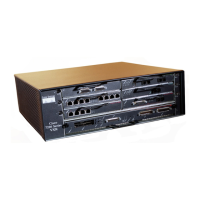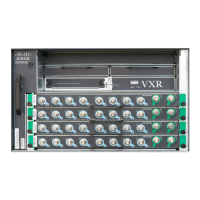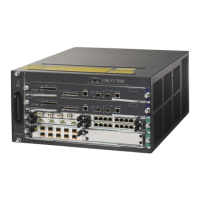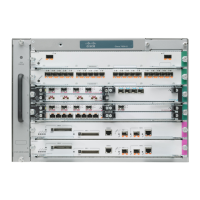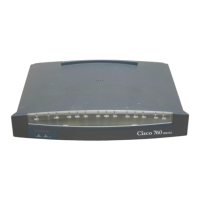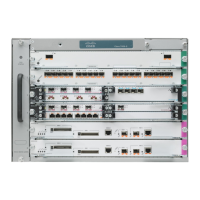Send document comments to nexus7k-docfeedback@cisco.com
7-23
Cisco Nexus 7000 Series NX-OS Interfaces Configuration Guide, Release 5.x
OL-23435-03
Chapter 7 Configuring vPCs
Information About vPCs
• VLANs (PVRST+)
Note Display the configuration on both sides of the vPC peer link to ensure that the settings are identical.
You can use the show spanning-tree command to display information about the vPC, when that feature
is enabled. See the Cisco Nexus 7000 Series NX-OS Layer 2 Switching Configuration Guide, Release 5.x,
for an example.
Note We recommend that you configure the ports on the downstream devices as STP edge ports. You should
configure all host ports connected to a switch as STP edge ports. (See the Cisco Nexus 7000 Series
NX-OS Layer 2 Switching Configuration Guide, Release 5.x, for more information on STP port types.)
vPC Peer Switch
The vPC peer switch feature was added to Cisco NX-OS Release 5.0(2) to address performance concerns
around STP convergence. This feature allows a pair of Cisco Nexus 7000 Series devices to appear as a
single STP root in the Layer 2 topology. This feature eliminates the need to pin the STP root to the vPC
primary switch and improves vPC convergence if the vPC primary switch fails.
To avoid loops, the vPC peer link is excluded from the STP computation. In vPC peer switch mode, STP
BPDUs are sent from both vPC peer devices to avoid issues related to STP BPDU timeout on the
downstream switches, which can cause traffic disruption.
This feature can be used with the pure peer switch topology in which the devices all belong to the vPC.
Note Peer-switch feature is supported on networks that use vPC and STP-based redundancy is not supported.
If the vPC peer-link fail in a hybrid peer-switch configuration, you can lose traffic. In this scenario, the
vPC peers use the same STP root ID as well same bridge ID. The access switch traffic is split in two with
half going to the first vPC peer and the other half to the second vPC peer. With the peer link failed, there
is no impact on north/south traffic but east-west traffic will be lost (black-holed).
See the Cisco Nexus 7000 Series NX-OS Layer 2 Switching Configuration Guide, Release 5.x, for
information on STP enhancement features and Rapid PVST+.
vPC and ARP or ND
A feature was added to Cisco NX-OS Release 4.2(6) to address table synchronization across vPC peers
using the reliable transport mechanism of the Cisco Fabric Service over Ethernet (CFSoE) protocol. You
must enable the ip arp synchronize and ipv6 nd synchronize commands to support faster convergence
of address tables between the vPC peers. This convergence is designed to overcome the delay involved
in ARP table restoration for IPv4 or ND table restoration for IPv6 when the peer link port channel flaps
or when a vPC peer comes back online.
vPC Multicast—PIM, IGMP, and IGMP Snooping
Note The Cisco NX-OS software for the Nexus 7000 Series devices does not support PIM SSM or BIDR on
vPC. The Cisco NX-OS software fully supports PIM ASM on vPC.
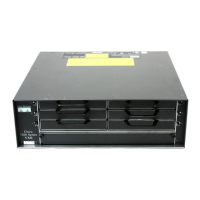
